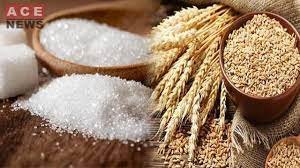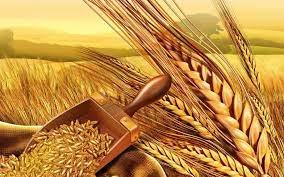Agriculture Import

Agriculture import is now a net importer for certain major agricultural products after becoming exporting a few years ago. This is because the government’s inability to focus on agronomy has cost the country an expensive cost for food and textile products.
Agriculture import from the fiscal year 2018-19, and sugar up to the end of last fiscal year (FY20),” Sindh Abadgar Board (SAB) Vice President Syed Mahmood Nawaz Shah said in an interview with The Express Tribune.
Pakistan Agriculture Import and Export Sugar and Wheat

Pakistan agriculture import-export Sugar and Wheat control the rising food price within the country. This strategy, however, Made-in Pak has resulted in an increasing trade deficit. “The agriculture import-export statistics such as cotton has reduced the balance of current account the month of August,” He said.
The price of sugar may decrease over the next one or two months after millers begin producing the sweetener in time for the next season. But the price of wheat flour could remain high until the next season of harvesting for the grain, which will begin on March 20, 2021, according to his estimates.
Agriculture Import the small import of sugar, will not be enough to help the nation in bringing down the cost of the commodities that have increased during the year, He said.
He stated that the production of wheat dropped 15% across the country, possibly due to climate change during the final season of FY20. “The government, however, didn’t notice the decline in yield and believed that the nation produced 25 million tonnes (which is needed to meet the demand of local farmers throughout the course of the year),” he added.
Our Country Produced Wheat

“The country produced wheat ranging from 22 and 23 million tons during FY20, versus the general expectation of 25 million tonnes,” Shah said, noting “Due to the incorrect assumption it was the case that government (Economic Coordination Committee (a part of Cabinet) didn’t approve the agriculture import over the last couple of months.”
“In addition, the release late of wheat by the provincial (Sindh) state government out of the buffer stocks led the price of wheat to increase to a record of Rs62 per kilogram the last few days of retail,” he said.
“We (farmers) think that the decrease in wheat production is caused by the changing climate (including unexpected rains). The real reasons may be different. But, nobody (concerned the federal and provincial authorities) is paying attention to the changes and suggesting possible solutions to producers,” Shah said.
Pakistan Agriculture Import and Export Sugar

Shah claimed that the nation did not just produce record-breaking sugar with seven million tons during FY19, but also more than 2 million tonnes more than the country’s annual requirement of 5.2 million tons. In the years following (FY20) production decreased but didn’t decrease below the annual requirements.
“Sugar millers claim they have a massive stock of sugar. There is no requirement for the import of sugar, However, the price of the sweetener on the market resulted in the importation of the product,” he added.
“Sugar price has nearly increased to Rs110 for a kilogram from Rs52 earlier in the year, without a reason, however, it is due to the upward trend of the commodity’s price on global markets,” He said.
State Bank of Pakistan Governor Dr Reza Baqir earlier stated that the rise in food prices was a seasonal issue and that the government will soon get over the problem as that of last year. The rise in food prices is caused by supply shocks and not an increase in demand.
As per the Pakistan Bureau of Statistics (PBS), the import of wheat was up 100 per cent up to $92.29 million in the month of September, compared to the absence of imports during the month that followed the previous year.
The import of sugar shot up 5,536 per cent to $12.34 million, compared to $219,000. The import of raw cotton shot up 2,249 per cent in September to $88.56 million in the month of September, compared to the figure of $3.77 million in September of the previous month in the previous year.
Agricultural Trade

It is estimated that the value of U.S. Agriculture Import Export Statistics declined in 2015, notably with regard to bulk exports. However, U.S. imports grew in 2015, however at a slower rate as compared to the previous years. The most important U.S. exports are grains/feeds and livestock products, including soybeans and horticultural items. The most significant U.S. agriculture import permit are horticultural and tropical goods.
U.S. Agriculture Import Export Statistics were valued at $140 billion during 2018 – a 1 per cent increase in comparison to 2017. The growth in exports was hindered by a decrease in exports to Asia specifically for soybean exports. agriculture import permit increased by 6-percent in 2018, reaching $129 billion. Imports have grown at a higher rate than exports from 2016 driven by the robust growth of the domestic economy. These changes in U.S. agricultural trade produced the country with a surplus in trade in 2018 in the amount of $10.9 billion, which was the lowest surplus since 2006.
The value of U.S. Agriculture Import Export Statistics increased by a small amount in 2018 due to gains across every major commodity group, with the exception of oilseeds and products made from oilseeds. Growth was held back by a decline of 11 per cent in oilseed and oil exports in comparison to 2017. As a percentage of the total exported value of exports, the exports of the horticultural products were the biggest category with $34.2 billion, or 24% of all agricultural exports that were exported in 2018. After falling in 2018, oilseeds and oilseed products exports fell to fourth in terms of exports category following a second place in 2017 and 2016.
The majority from U.S. agriculture import-export is horticultural goods: fruits trees, vegetables wine, essential oils, wine and cutting flowers, nursery stock and hops. Sugar and tropical goods such as cocoa, coffee and rubber made up only 18 per cent of the agricultural imports in the year 2015. Imports of processed vegetable oils, products from grains red meat, and dairy products have risen substantially in recent times.
Canada was the main export market of U.S. agriculture import-export in 2018 which was followed by Mexico and in the European Union, Japan, and China. Prior to the year 2018, China had been the most important or second-largest market for agricultural products each year since the year 2008. The dramatic drop in exports from China as a result of trade disputes between China and the U.S. and China resulted in a dramatic decrease in exports of oilseeds and other commodities.
Canada along with Mexico areas the United States’ largest supplier of agricultural products ($22.2 billion and $19.3 billion, respectively in 2013-15) which include mostly consumer goods like horticultural items as well as red meats and snacks. In comparison, the European Union is a close third with $18.9 billion in U.S. agricultural imports in 2013-2015, with horticultural goods making up more than half of the value. South America, led by Brazil, Chile, and Colombia — averaged $13.7 billion of U.S. imports over the last three years, comprised mostly of sugar, horticultural and tropical goods that have an advantage in comparison or during the season.
Between 2013 and the year 2015 East Asia and North America were the two main sources of approximately 60 per cent of U.S. agricultural exports. East Asia, dominated by China, Japan, and South Korea — was the largest market, with 34 per cent of the market. The proportion that U.S. exports to Canada and Mexico have increased, and accounts for 28.9% of the world’s exports in the past three years. It is believed that the European Union is the third most important regional destination and is closely followed by Southeast Asia (led by the Philippines, Vietnam, and Indonesia). However, South America is a declining sector, with the obvious difference in Colombia.
Exports make up a significant portion of the total amount in U.S. production for select agricultural products. For instance, more than 70% of the total volume produced by U.S. production of tree nuts (largely almonds) and cotton was exported in the years 2011-13, which is more than 50 per cent of the rice and wheat production. Overall, the share of exports in U.S. agricultural production averaged 20 per cent between 2011 and 2013 based on volume. similar to the average annual share since 2000.
U.S. consumers rely heavily on imports of certain items in which the demand is far greater than the capacity of production in the country. The majority of coffee, cocoa and other spices and shellfish/fish-based items consumed by the United States are imported, like approximately half of fresh fruits and juices of fruit, and nearly one-third of sugar and wine. Because the high U.S. incomes drive consumption as well, the amount consumed by U.S. agricultural imports has been increasing by 4 per cent annually on average since 2000.
